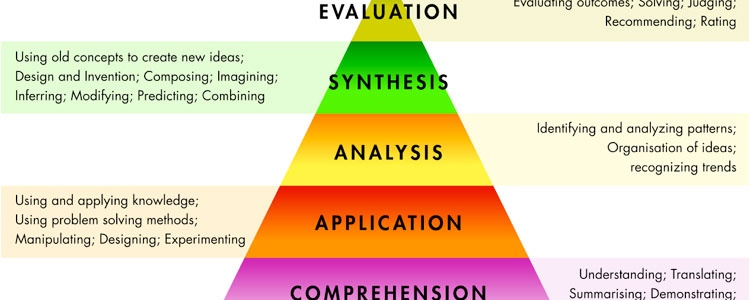
“The Gossip Game” Exit Slip Using Bloom’s Taxonomy
shared by pjfender on November 10, 2015Activity Summary:
Instructions:
This exercise is done during the last 5-7 minutes of class. It’s called “The Gossip Game,” and it uses the six levels of Bloom’s Taxonomy to gauge the level of understanding students got from the day’s course content. I ask a student to start the game by telling something they learned from the lesson, and what level of Bloom’s that knowledge represents. I ask students to continue the discussion of the first student’s topic by adding to that line of thought or reasoning. I prompt students by using transition questions to carry along the conversation. The next student adds to the conversation and gives the level of Bloom’s their response represents.
Once a thought is completed, in other words, once everything about the first topic has been discussed and analyzed according to the Bloom’s Taxonomy, another student starts a new discussion of what he or she learned and adds the Bloom’s category for what the learning represents. This game goes on until everyone in the class has participated.
Students are allowed to leave class once the game is over.
An example of this game’s progression in a Business Communication class, English 302 follows:
Teacher: Okay class, let’s play “The Gossip Game” using Bloom’s Taxonomy. What did you learn today, and what level of Bloom’s does that learning represent, recall, understanding, application, analysis, synthesis, or evaluation?
Student 1: I learned that in order to build a good corporate image for your company with the customer, you have to pose negative information with a positive buffer. This strategy represents application because you are applying the rules of engagement with customers to the situation.
Teacher: How do you use a positive buffer to present negative information?
Student 2: You have to greet the customer by using a positive, affirming statement about the value of your company’s relationship with the customer. This strategy represents understanding because it shows you comprehend the rules of engagement in addressing the customer.
Teacher: What do you do after you have made your positive statement?
Student 3: You share the main idea of the communication with the customer, though it may be bad news. This strategy represents synthesis because you are taking information and putting it together to form a message that the customer needs to know.
Teacher: What are some forms of communication you may use to share this information with customers?
Student 4: You may use a letter, an email, or a report. This strategy is considered recall because we must learn the different types of communication and remember them to know which ones to use for specific purposes.
Teacher: Very good! New topic, please…
Student 5: ________________________________________________
Once everyone has participated, I say, “We have just played “The Gossip Game.” Class is dismissed. I will see you next time!